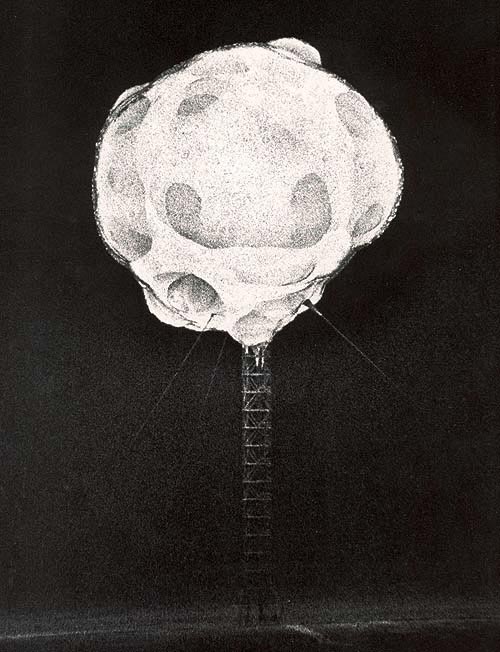Science
Related: About this forumMIT camera can take pictures around a corner
There is a 3 minute video at the site demonstrating how it works - amazing technology to me. An excerpt:

...
The corner peeking camera is now being shown off in action as a bulky prototype. The camera is able to see what’s around the corner by firing 50 different femtosecond laser pulses 60 different times at various spots on a wall. The special imaging sensor collects the scattered light that is reflected back and processes that reflected light using special algorithms. Those algorithms are able to re-create the scene based on how long it took the photons from the laser pulses to return.
...
pipoman
(16,038 posts)edge of photographic technology for decades...This is cool new technology..
I love the work of Harold "Doc" Edgerton, inventor of the photographic strobe..I've even recreated some of his original high speed techniques..
rfranklin
(13,200 posts)ATOMIC BOMB PHOTO Automatic Camera situated 7 miles from blast with 10 foot lens. Shutter speed equaled 1/100,000,000 of-a-second exposure.

pipoman
(16,038 posts)after the fact before the first hints of Doc's work with the DOD. There are rumors of a huge cache of his work with the DOD stashed away in some archive in the Pentagon. Calls from the scientific and art communities for release of these works. It is believed that some of the shots are extremely gruesome.
Edgerton was from my home town in NE. He gifted some of his earliest strobes to the county who installed them in the top of the county courthouse. Growing up, the strobes were visible for miles, I remember them at night and them making home feel like home. I attended one of his lectures at the local museum and have been interested since. The museum later built Edgerton Explorit Center with local funds and funding from MIT and the Edgerton Foundation. Very cool place. Here's one of my attempts at duplicating one of his early techniques...

krispos42
(49,445 posts)krispos42
(49,445 posts)It's shutter speed is incredible. Light travels 0.6mm between clicks... that only 0.023 inches.
I calculate 50 billion frames per second.
Holy shit. ![]()
caraher
(6,279 posts)Last edited Wed Mar 21, 2012, 10:05 PM - Edit history (1)
So yeah, if your time resolution is 2 ps then 1 second is cut into 50 billion slices. But it's not a shutter speed. This is not high-speed imaging; you have to build the image out of a bunch of pulses, and the 2 ps resolution refers not to a frame rate but to the effective spatial resolution based on scattered photon time of flight.
Streak cameras can be used to capture high-speed dynamics, but this particular setup looks at photon arrival times to work out the paths the scattered photons had to have taken as they bounce of a static object.
You could actually work out the top frame rate of such a camera... the article said they needed at least 3000 laser pulses to form the image (it's not clear to me exactly what "50 different femtosecond laser pulses 60 different times at various spots on a wall" means; it could mean as few as 3000 shots total, or it could be 3000 shots times some number of different "spots" on the wall not given. It's also conceivable that the repetition "60 different times" just reflects the need to collect enough photons to make the image, which might be reduced by using more intense pulses).
So... if you want to image a volume with a depth of roughly 30 cm, you probably can't repeat pulses any faster than about one per nanosecond (lest one photons scattered from one pulse be recorded as early photons from the next). if it takes 3000 pulses to make one image then that's 3 microseconds to acquire the data for 1 3D image. So a more realistic frame rate is something like 300,000 frames per second. But in practice it's currently limited more by the computing time than the data acquisition time.
krispos42
(49,445 posts)...with 2ps accuracy.
Okay, I understand now.
It's still a hell of a thing! ![]()
You can do a lot of fun stuff with streak cameras! Here they're using their time sensitivity to get accurate distance information.
caraher
(6,279 posts)
In the figure previews you can see some of how it works. Part of the laser pulse splits to the photodetector in order to trigger the streak camera. A streak camera basically gives a 2D image but one axis is spatial while the other is time, so essentially you image a 1D slice laterally but the time axis gives you depth (that's where the time-of-flight for the photons comes into the picture). To get the full 3-D picture you need to scan the point where the light hits the wall around; that's the function of the "galvo" mirror. The blue beam serves as a reference that shows up in a reliable location and time in each frame from which they reconstruct the image.